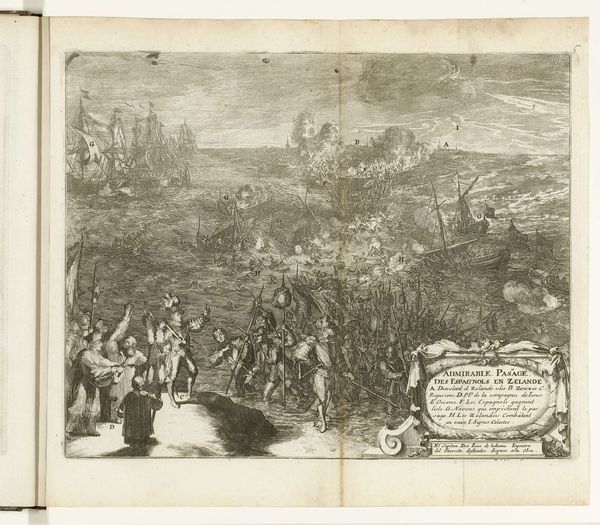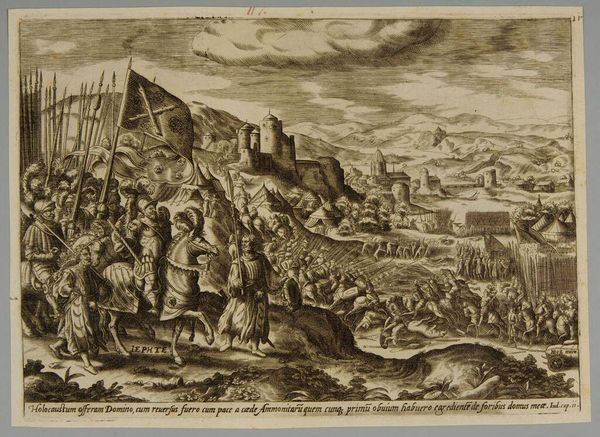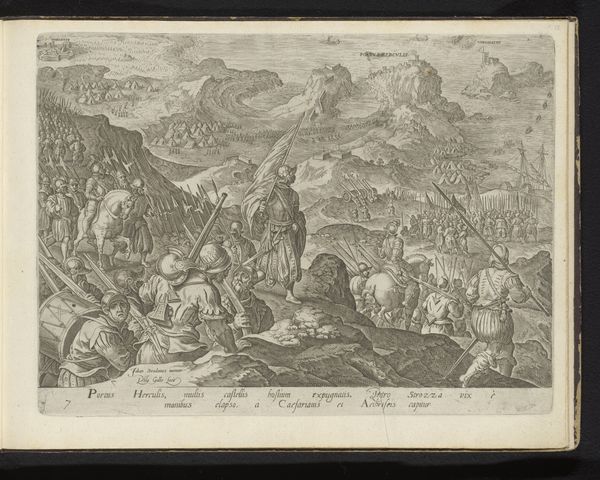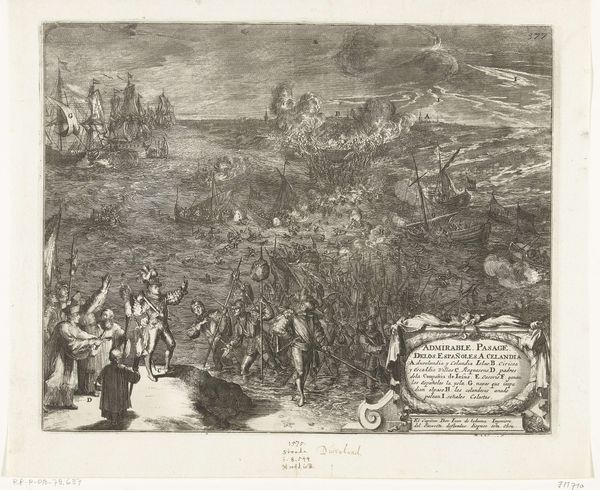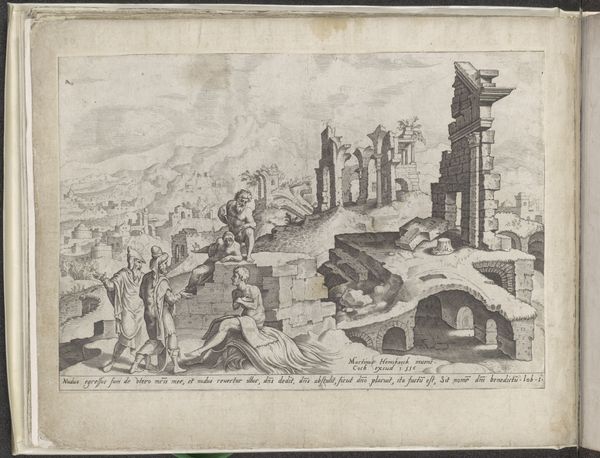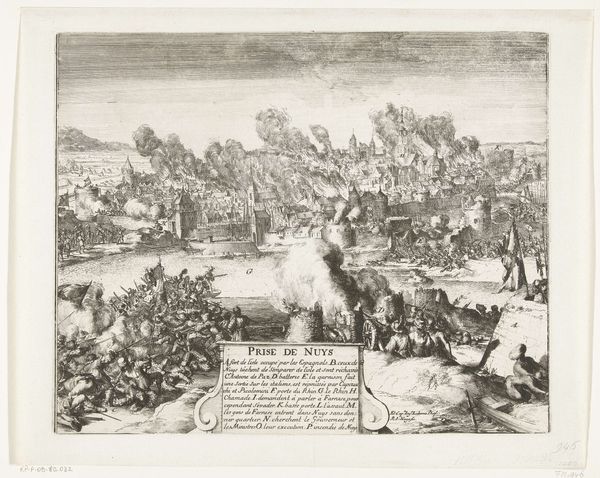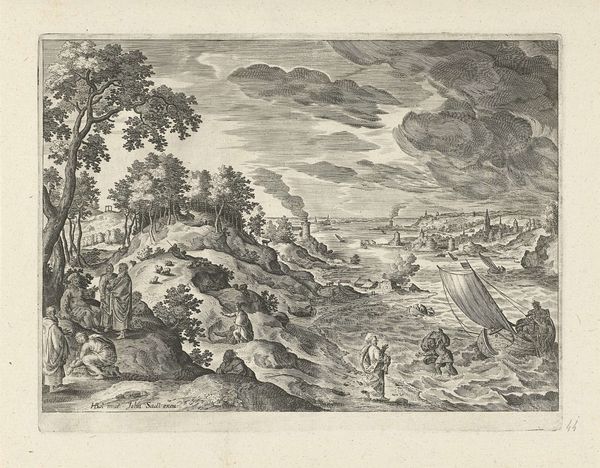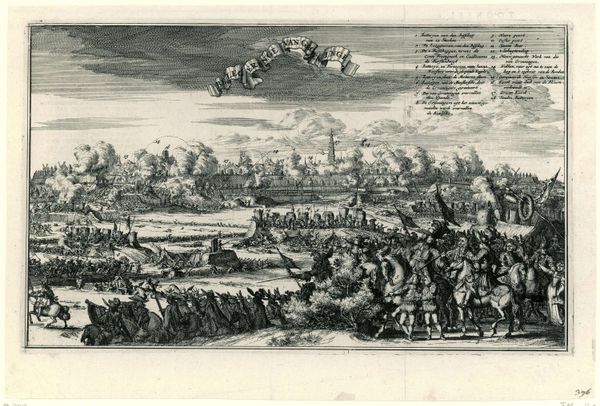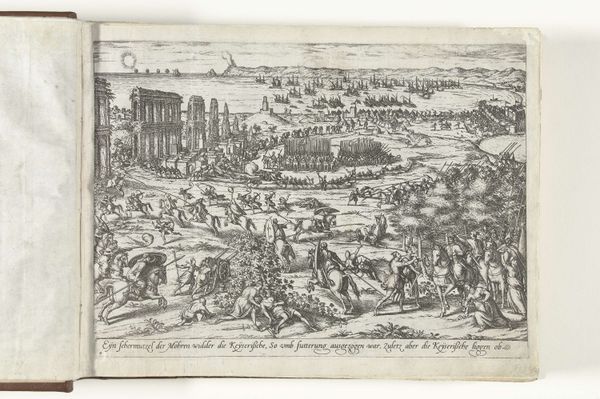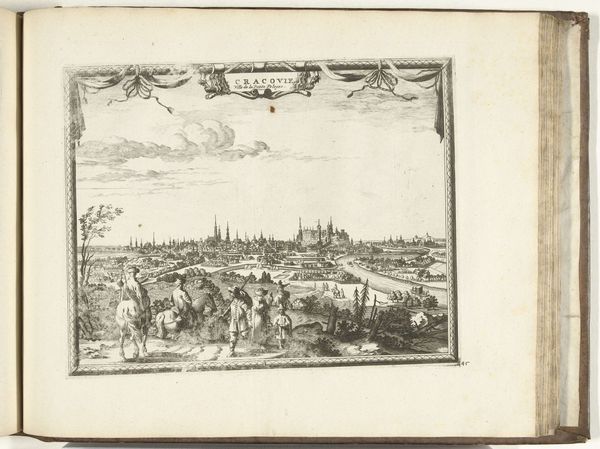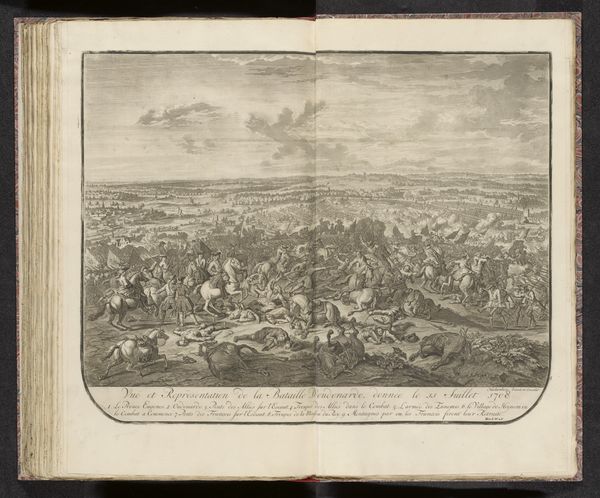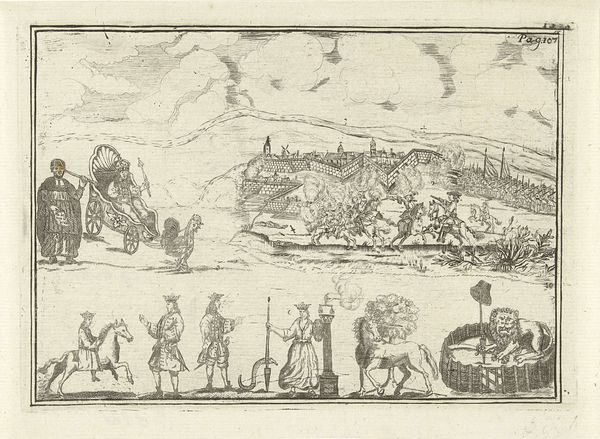
drawing, ink
#
drawing
#
landscape
#
romanesque
#
ink
#
cityscape
#
history-painting
Dimensions: height 215 mm, width 381 mm
Copyright: Rijks Museum: Open Domain
Étienne Dupérac’s ‘Palatijn te Rome’ is an engraving, dating back to the late 16th century. Look closely, and you’ll see the fine lines incised into the metal plate, probably copper, which would have been a highly skilled job. The artist would have used a tool called a burin to carve the image in reverse. Each line meticulously placed, to capture light and shadow, depth, and detail. Think of the labour involved in the execution of this image. This intaglio print-making technique allowed for the mass production of images, playing a crucial role in disseminating knowledge and artistic ideas during the Renaissance. By etching topographical views, Dupérac not only captured the physical reality of Rome but also contributed to the cultural understanding of its ancient past, feeding into a growing appetite for classical antiquity. The choice of printmaking as a medium democratized art, making it accessible to a wider audience beyond the elite circles. In this way, the means of production influenced the artwork's social impact, bridging the gap between artistic creation and cultural consumption.
Comments
No comments
Be the first to comment and join the conversation on the ultimate creative platform.
